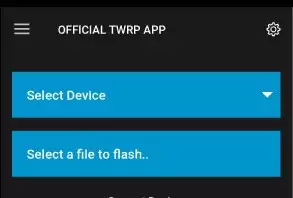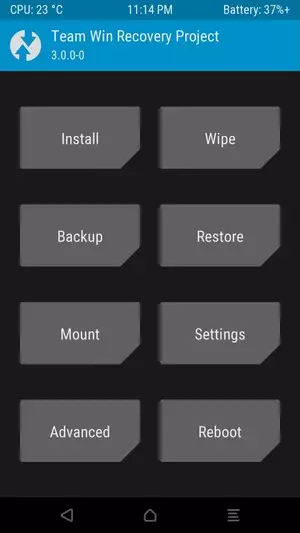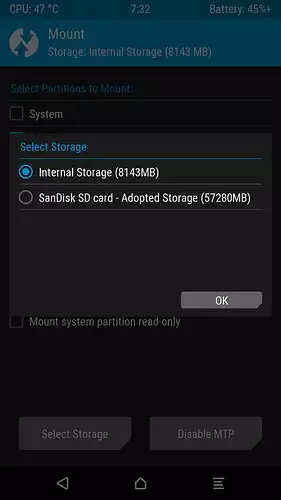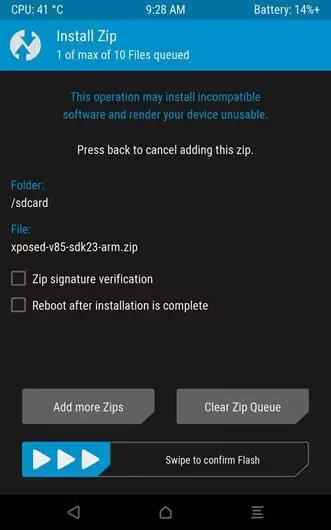Flash firmware on Jinga M1 4G
Mobiles >> Jinga >> Jinga M1 4G| Specifications | Reviews | Secret codes |
| Unlock phone | Root phone |
| Backup | Flash Firmware | Screenshot |
How to flash Jinga M1 4G?
Why reinstall the firmware?
Errors in the Android OS start to appear regularly.
Some applications stop opening.
Many applications from the Play Market do not start.
The phone turns off for no apparent reason.
The phone began to work slowly.
You want to update the firmware, as it does not suit you in terms of functionality.
Where can I find the firmware?
On the official website of the manufacturer.
On Internet resources where users post custom or official OS.
What should be done before installing the firmware?
Back up your contacts and user data and transfer it to your computer.
Insert your SD card into your phone. It must have enough memory to fit the firmware.
Find information about your smartphone model.
Fully charge your device's battery.
Download archive with Firmware.
Installing TWRP Recovery
Install the Official TWRP App via the Play Market. And run this application.
When you start the application for the first time, you must agree to install a new firmware and all the risks associated with this, as well as agree to grant the application Superuser rights and click the 'OK' button.
In the next screen, select the item 'TWRP FLASH' and provide the application with root-rights.

On the main screen of the application, click 'Select Device', and find your phone model.
After selecting the phone, the application will redirect the user to a web page to download the modified recovery environment image file. Download the proposed *.img file.
After downloading the image file, return to the main screen of the Official TWRP App and press the 'Select a file to flash' button. Then we tell the program the path where the file loaded in the previous step is located.
Now press the 'FLASH TO RECOVERY' button and confirm your choice, press 'OK'.
When the message 'Flash Completed Succsessfuly!' appears on the screen. Click the 'OK' button. The TWRP installation procedure is now complete.
Copy the necessary files to the SD memory card. Using a PC or laptop card reader.
Insert a memory card into the device.
To reboot into recovery, you need to enter the menu accessible by pressing the button with three stripes in the upper left corner of the main screen of the application. Select the 'Reboot' item, and then click on the 'REBOOT RECOVERY' button. The phone will reboot into the recovery environment automatically..
Firmware via TWRP

Before flashing, it is recommended to clear the 'Cache' and 'Data' sections. This will delete all user data from the device, but avoid a wide range of software errors and other problems. You must press 'WIPE' on the main screen.
Now you can start flashing. Click the 'Install' button.

The file selection screen is displayed. At the very top is the 'Storage' button, select the location where the firmware file is located.
Select the location where you copied the files.

Select the firmware file and click on it. A screen opens with a warning about possible negative consequences, you need to check the item 'Zip signature verification', which will avoid using damaged files during recording.
The procedure for writing files to the phone's memory will begin, accompanied by logging and filling in the progress bar.
When the procedure for installing the firmware is completed, the message 'Successful' appears on the screen.
Summary: Design: Classic; DualSIM mode: yes; SIM cards standard: Micro Sim / Micro Sim; GSM: 850 900 1800 1900; HSDPA: 900 2100 HSPA; LTE: 800 1800 2600; Dimensions (H/L/W): 143 x 72 x 8.2 mm, vol. 84.4 cm³; Display: LCD IPSColor (16M) 480x854px (5.0") 196ppi; Touch screen: yes; Weight: 140 g; Battery: Li-Ion; Built-in memory: 8 GB; Memory card: MicroSD max. 64 GB; RAM memory: 1 GB; Operating system: Android 5.1; Chipset: MediaTek MT6735; CPU 1 frequency: 1300.0 MHz(4-core); GPRS: yes; EDGE: yes; HSDPA: 21 Mb/s; HSUPA speed: 5,76 Mb/s; HSCSD: no; Wi-Fi: 802.11 b/g/n; Bluetooth: 4.0; USB: 2.0; IrDA: no; WAP: 2.0; XHTML: yes; SyncML: no; Data and fax mode: yes; Cam ...
Comments, questions and answers on the flash firmware Jinga M1 4G
Ask a question about Jinga M1 4G



